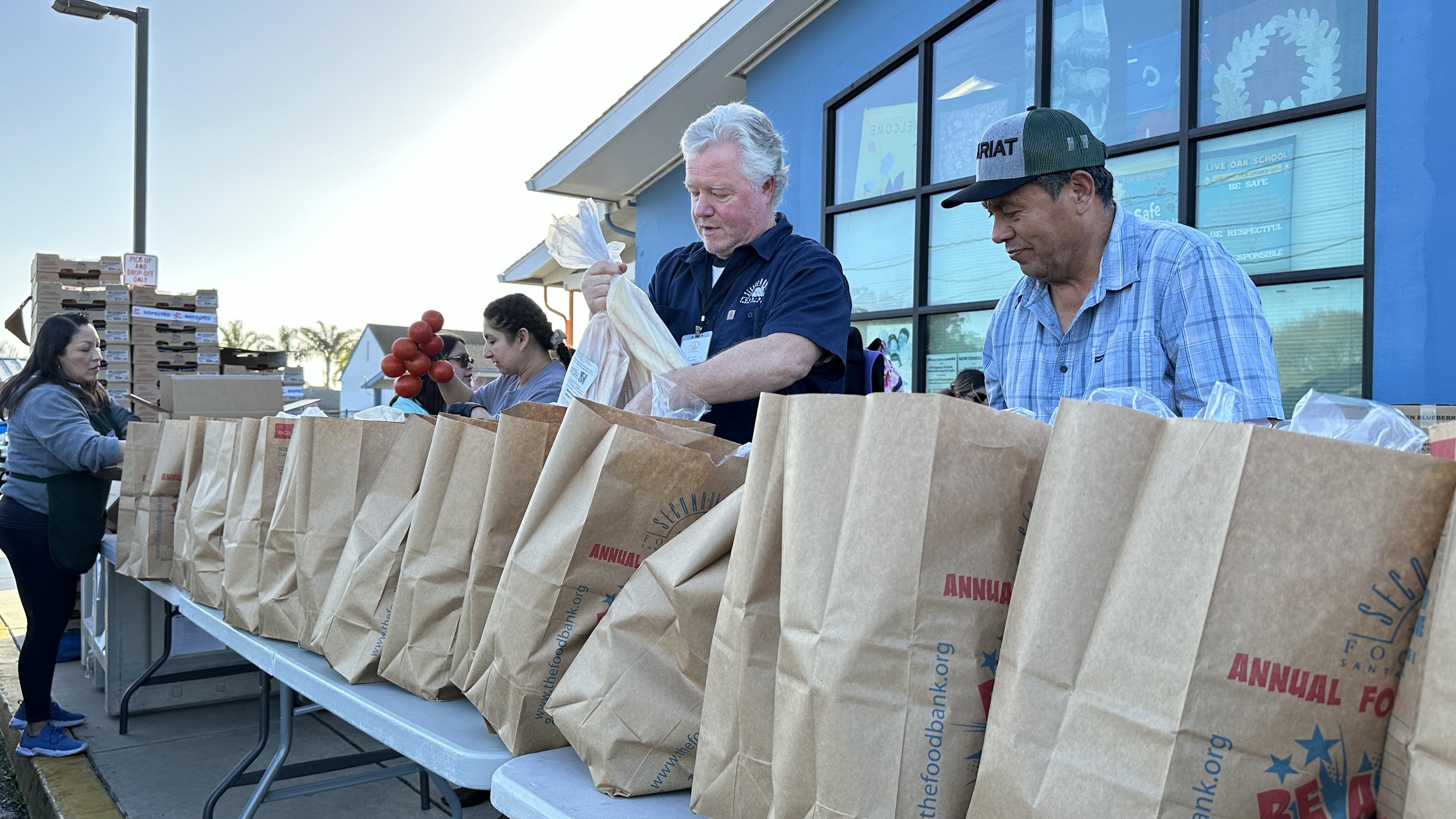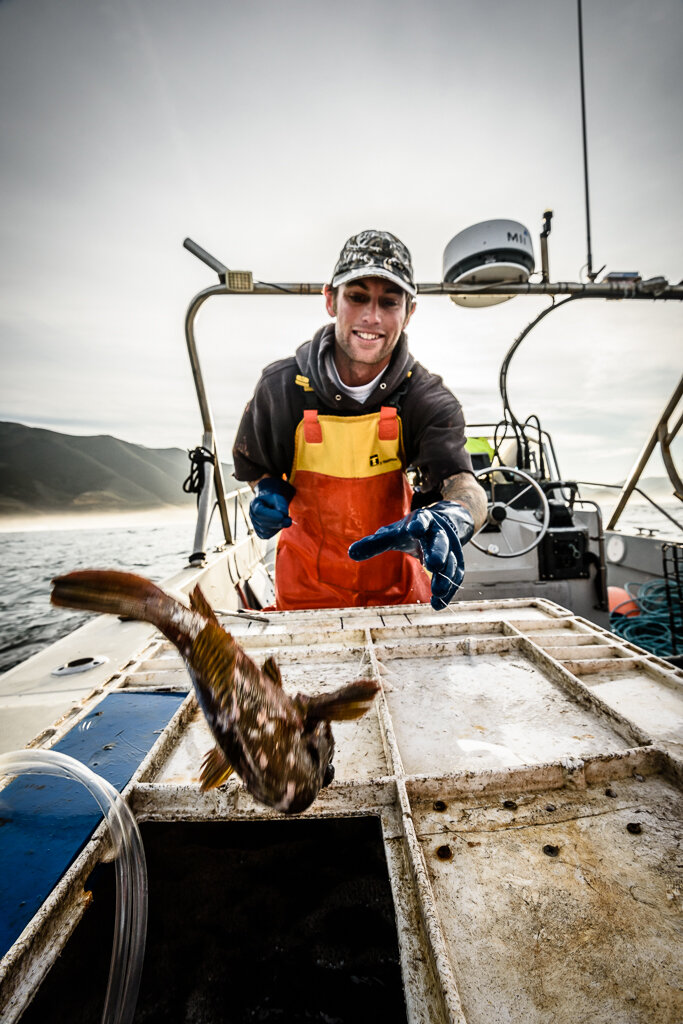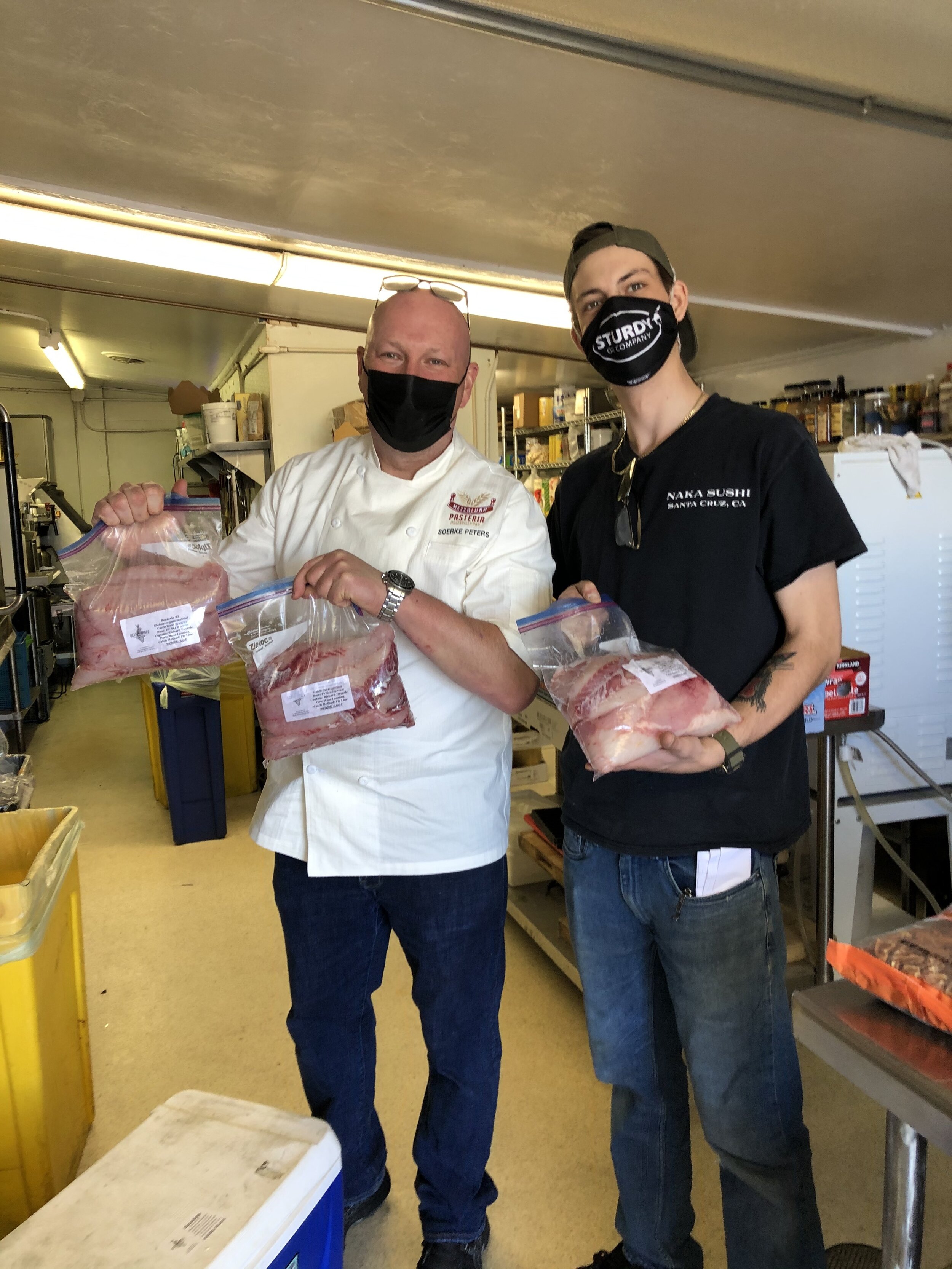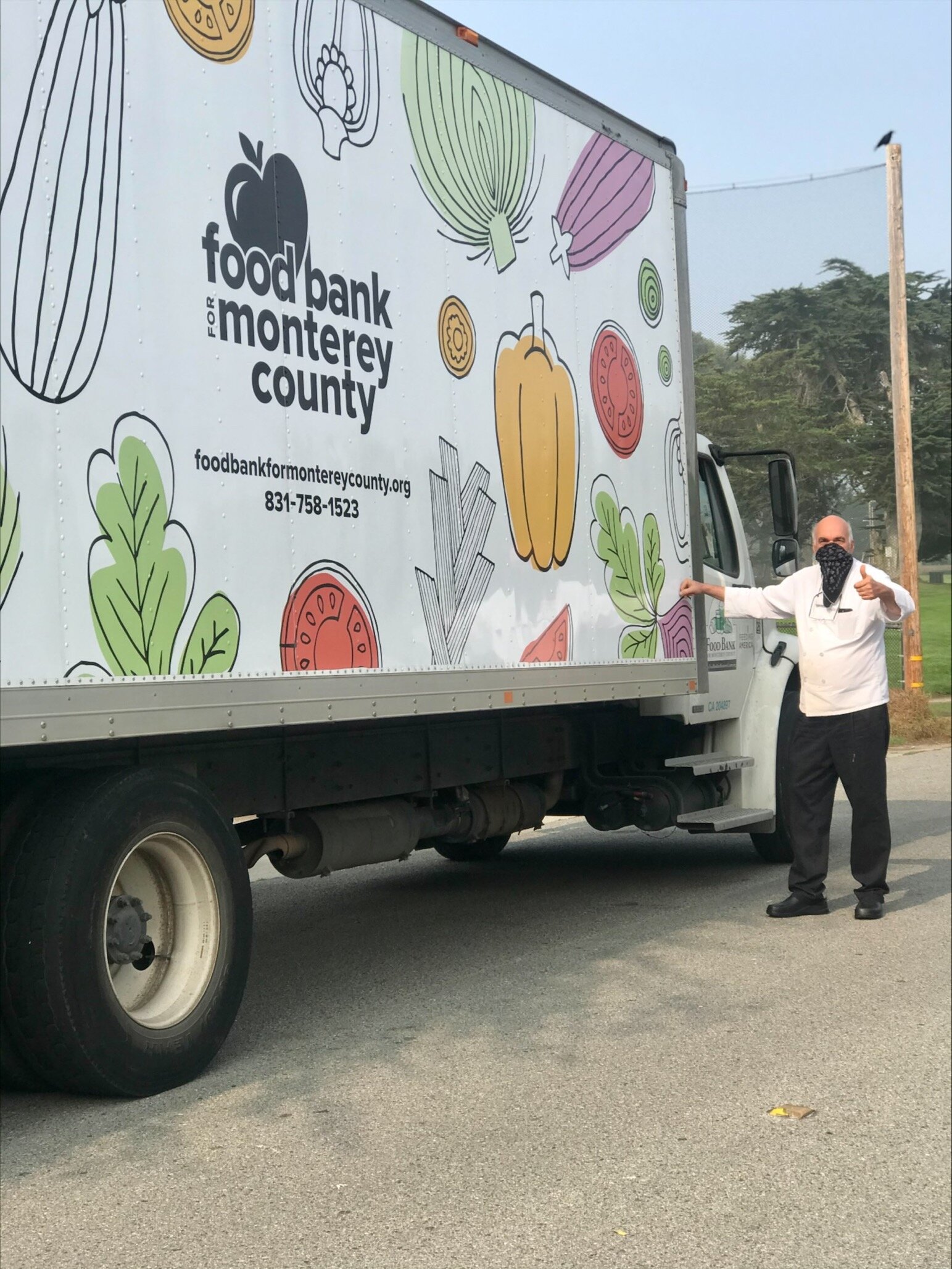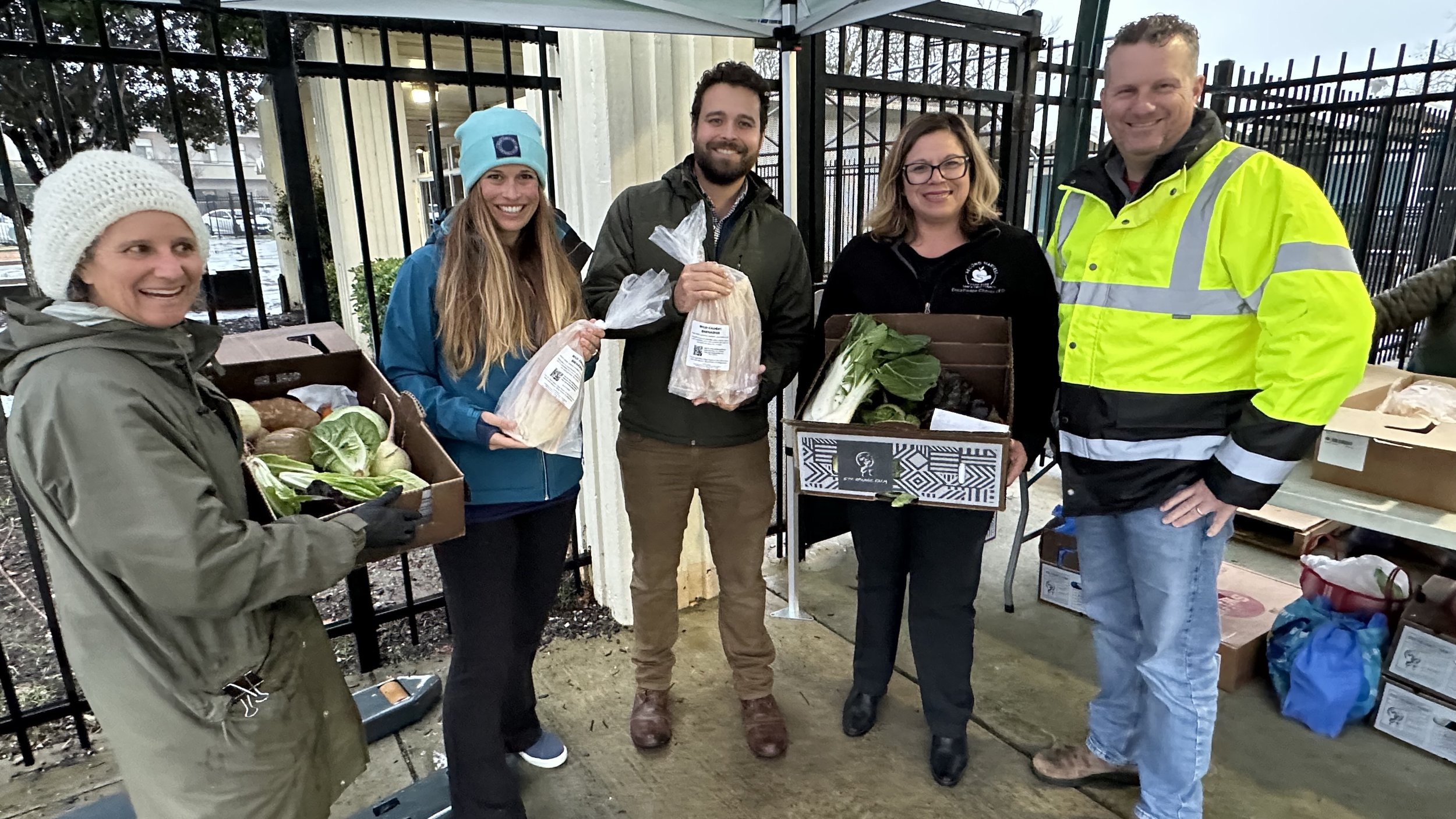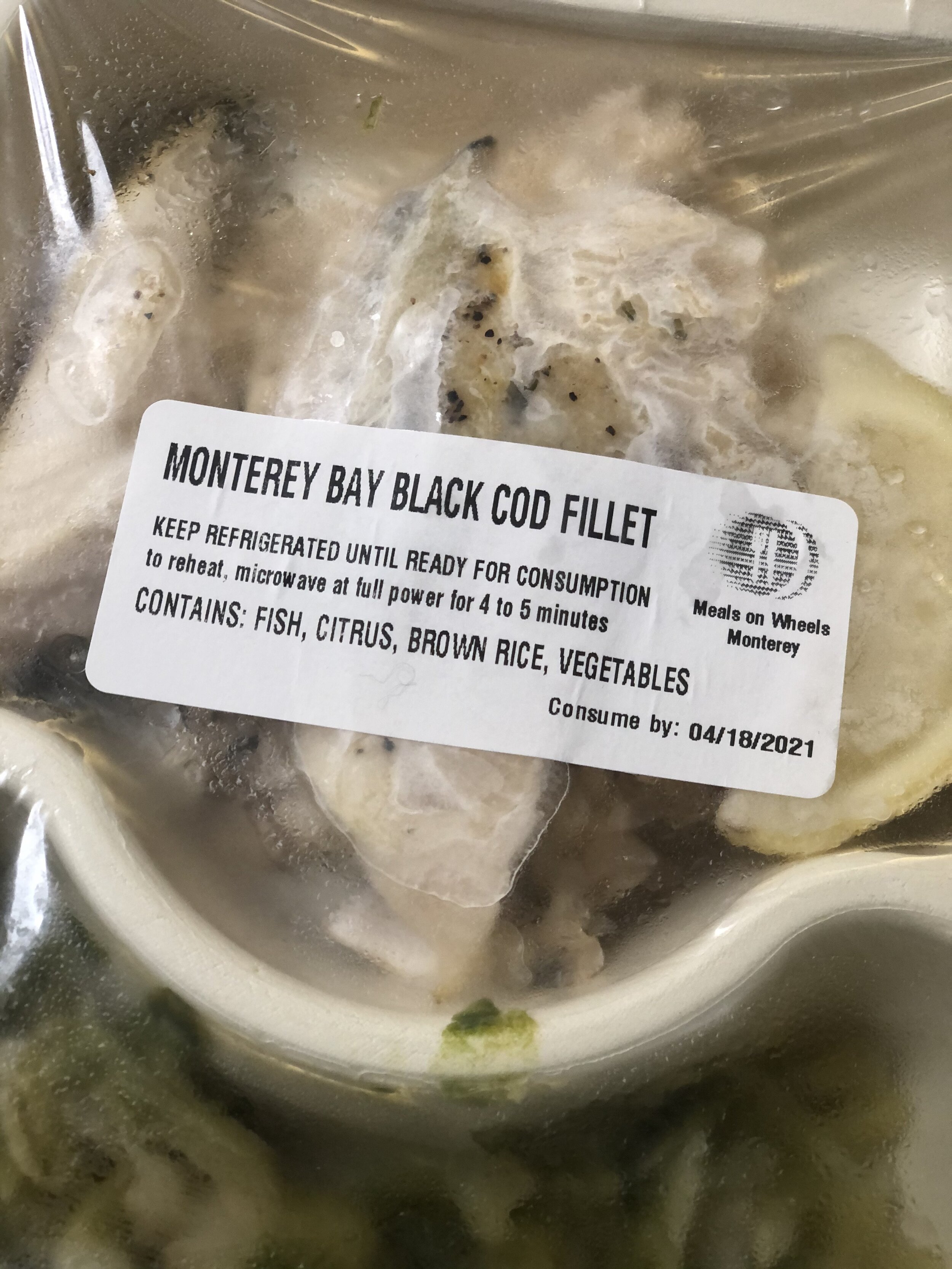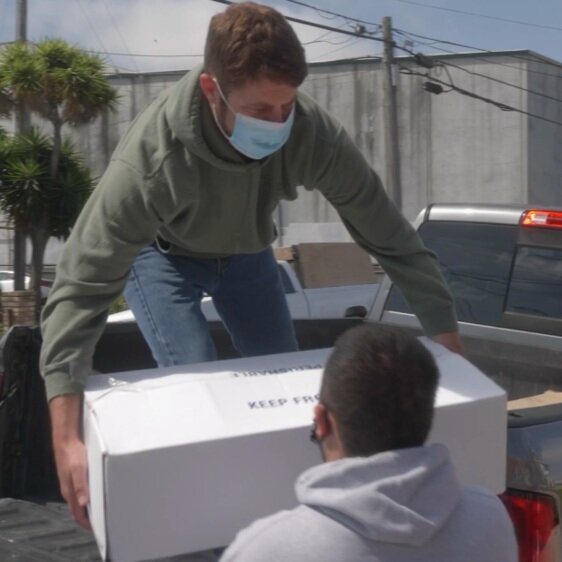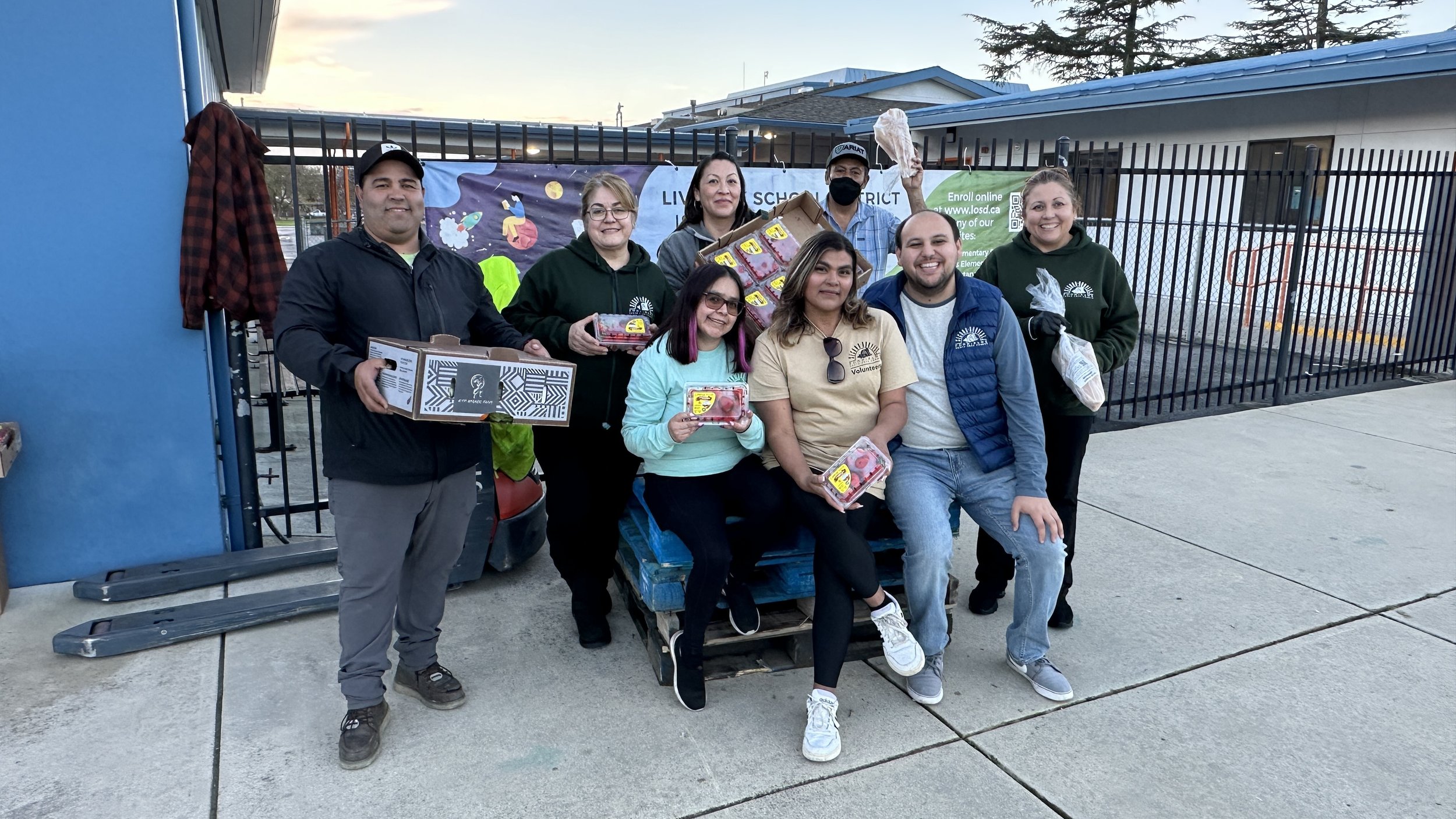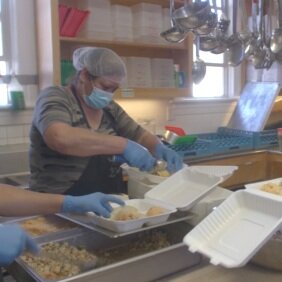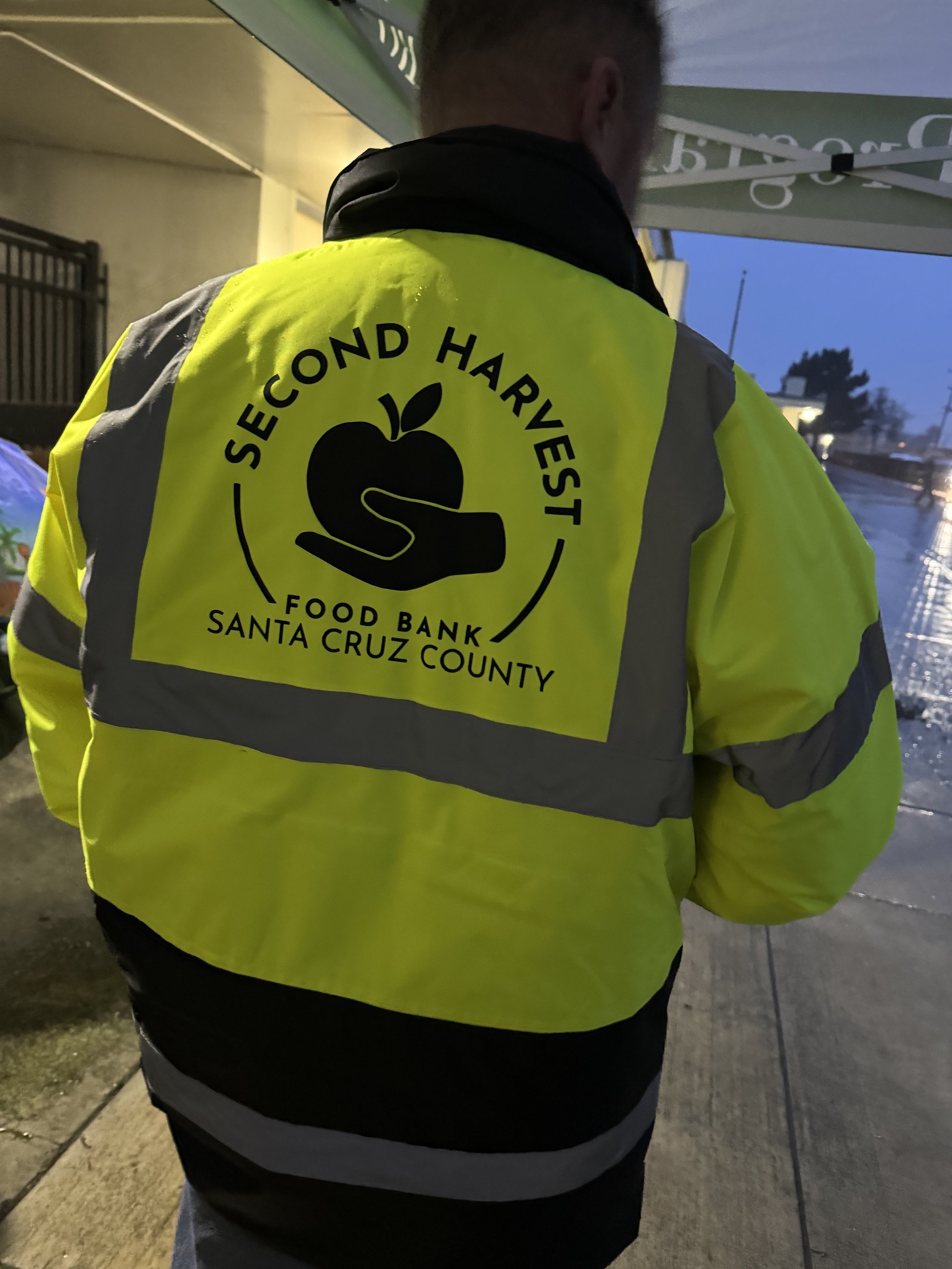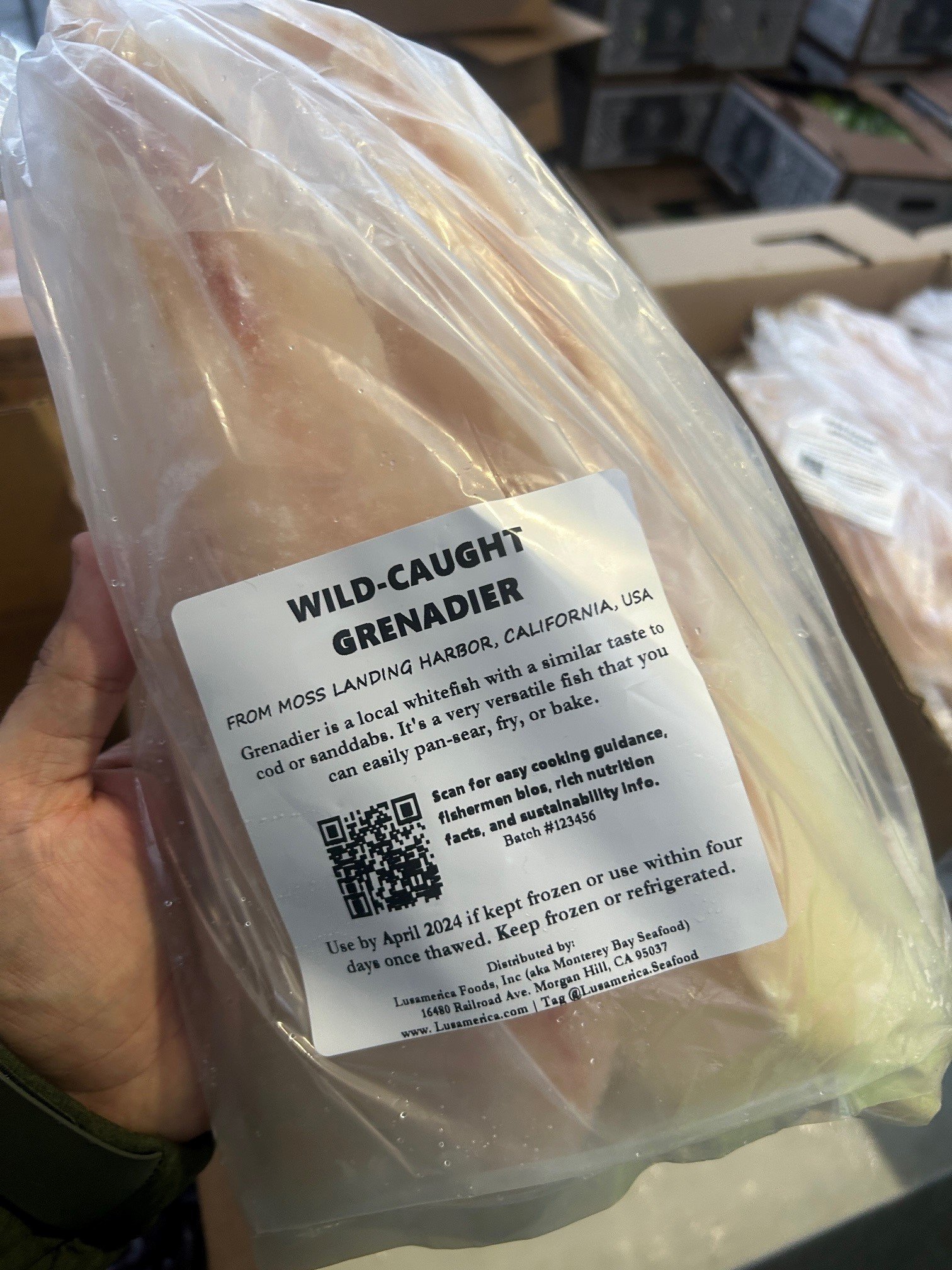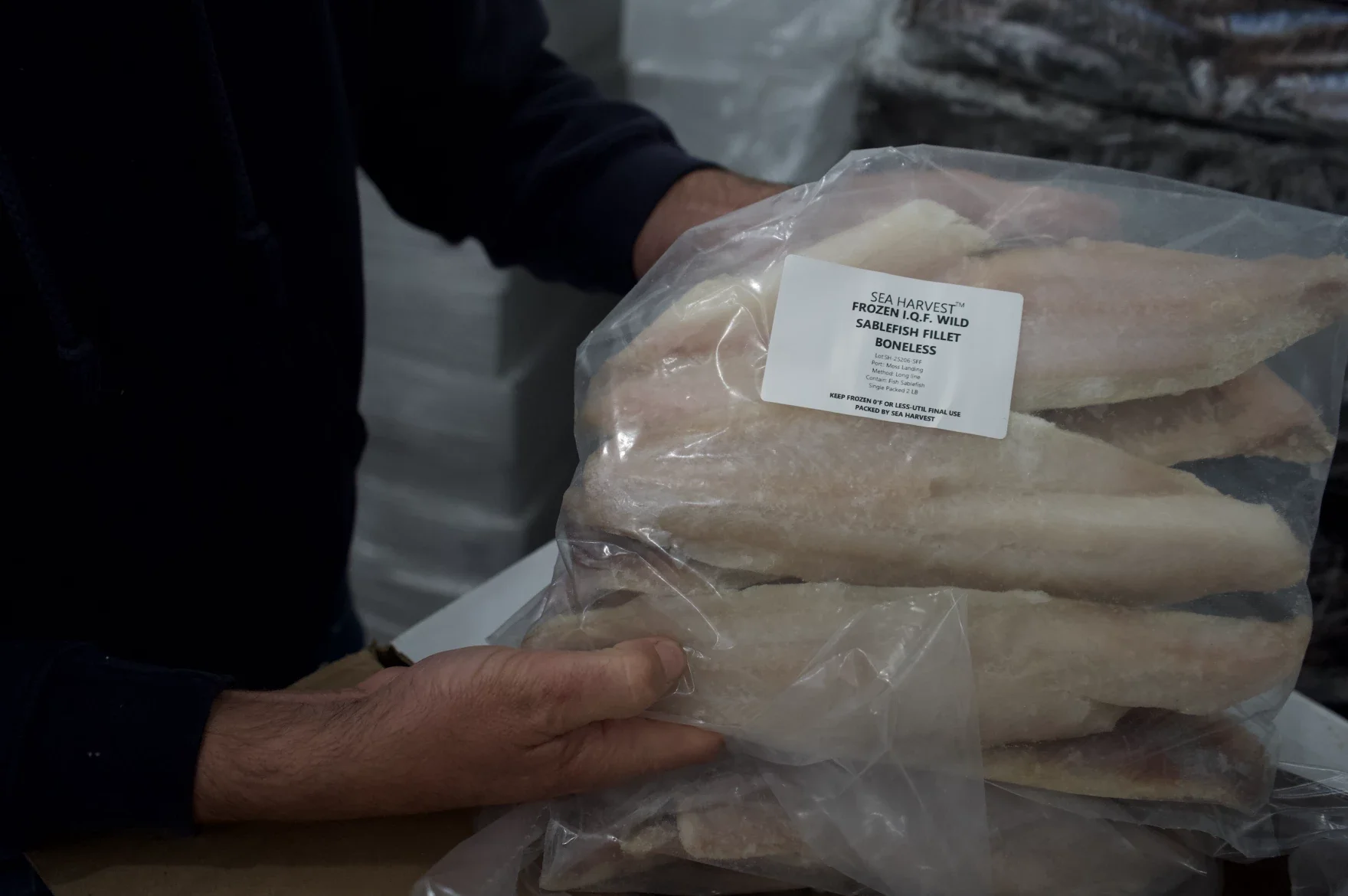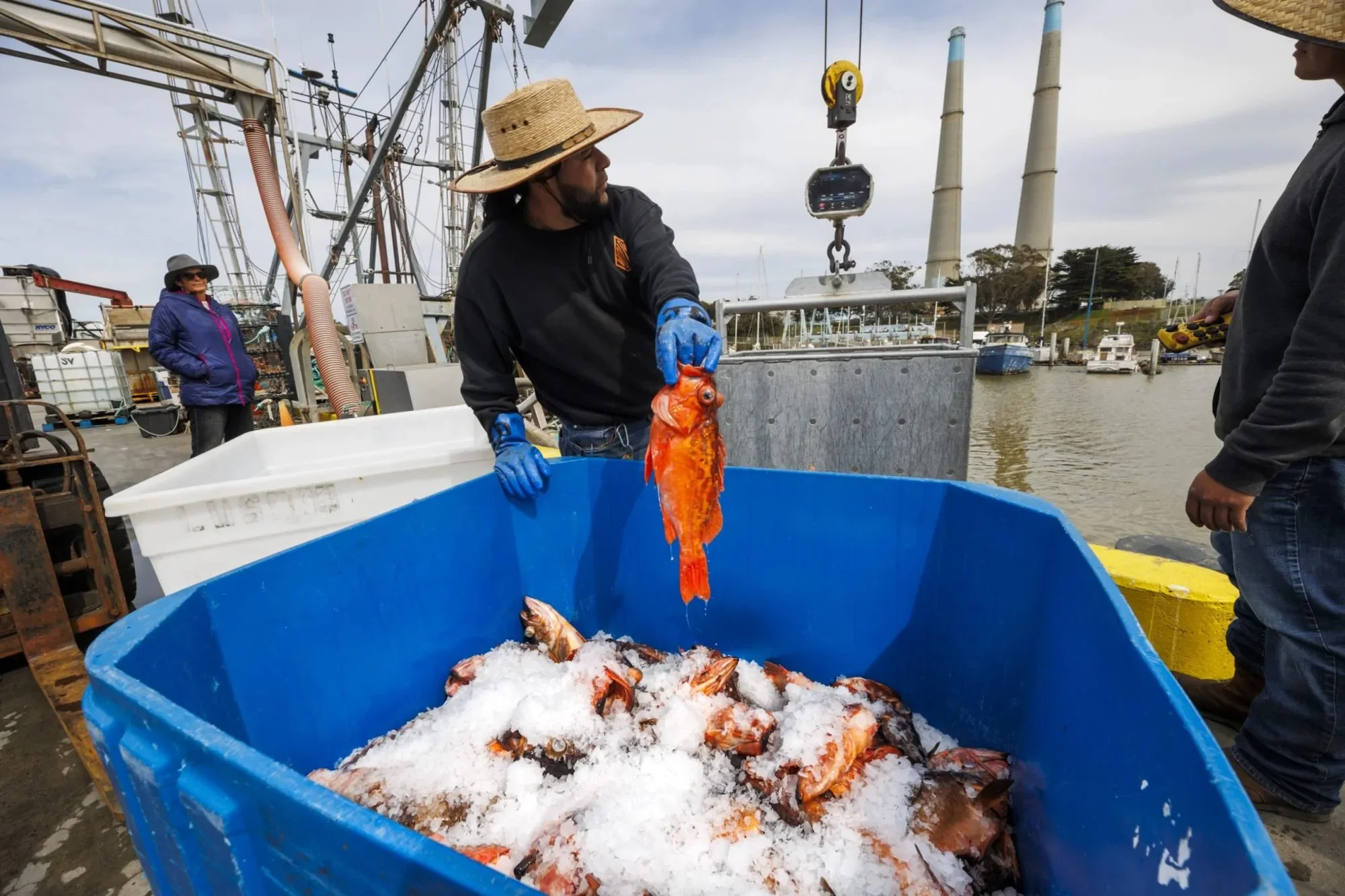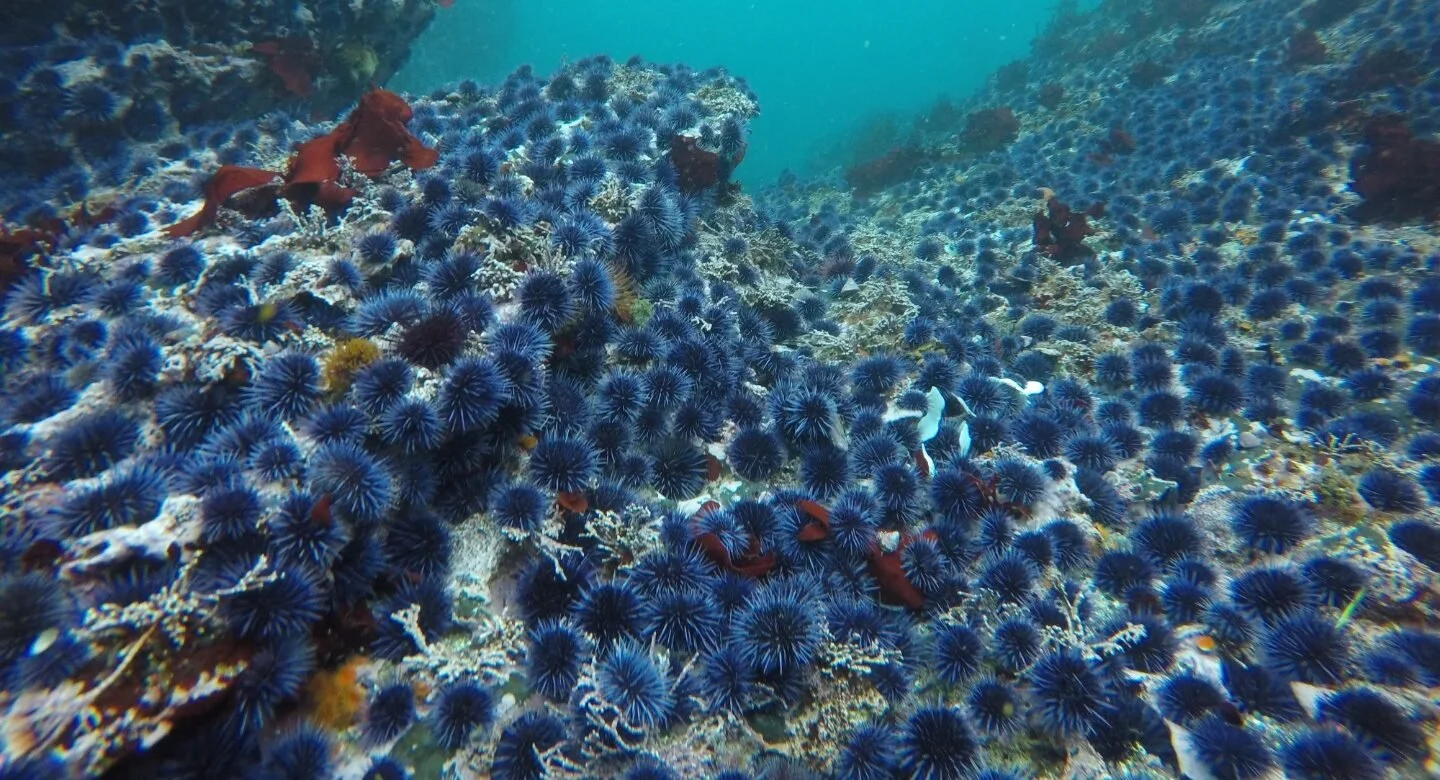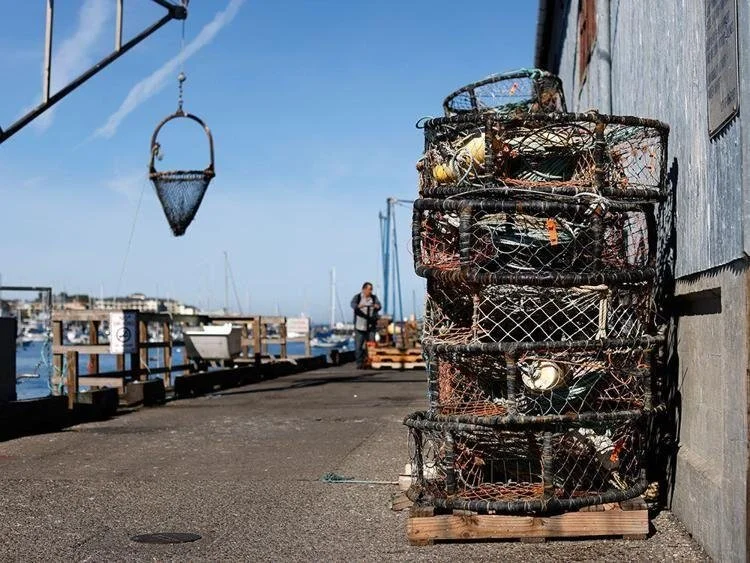Sustaining Local Families and Fisheries
In Monterey Bay, local fishermen and women have been feeding our coastal communities for generations, and today, they are feeding members of our community who are faced with food insecurity.
In November 2020, the Monterey Bay Fisheries Trust launched the Monterey Bay Community Seafood Program to provide healthy, sustainably harvested seafood to local families, farmworkers, seniors, and others in need of food assistance, along with economic support to our local fishermen, food workers, and seafood businesses.
We work with Monterey Bay seafood businesses to purchase seafood from fishermen at a fair market rate. They then process and deliver the fish to local food relief organizations.
To date, we have purchased over 30,000 lbs of local, sustainably-caught seafood and donated over 80,365 nutritious seafood meals in Monterey and Santa Cruz Counties.
Meet our Community Seafood Program partners:
Seafood Suppliers Food Relief Organizations
Lusamerica, Moss Landing Al & Friends, Monterey
Ocean2Table, Santa Cruz Food Bank of Monterey County, Salinas
Real Good Fish, Moss Landing Meals on Wheels of the Monterey Peninsula, Monterey
Sea Harvest, Moss Landing Pajaro Valley Loaves and Fishes, Watsonville
Second Harvest Food Bank Santa Cruz County, Watsonville
Grey Bears, Santa Cruz
Meet some of our Community Seafood Program Partners
Peter Adame is the Communications and Sustainability Director with Lusamerica. Lusamerica became a CSP supply partner in 2023 and has helped us create a market for an underutilized local species of seafood called grenadier through this program. Learn more by watching this short video featuring Peter.
Meet Ian Cole, Co-owner and Operator of Ocean2Table. O2T has been a partner of the CSP since it’s inception. Take a few minutes to watch this short video and learn about why it’s so important to buy locally caught seafood.
Our collaborative effort reduces pressure on food relief organizations, provides thousands of community members access to a sustainable, healthy protein, and supports markets for local seafood, thereby fueling the local fishing economy and maintaining our local seafood processing infrastructure and labor force.
Together, we can feed our community and support Monterey Bay’s working waterfronts and local, sustainable seafood for years to come.

“What is unique about this program is that it is connecting the need for food, which is significant right now, with a lot of fishermen who are ready, willing, and able to catch fish and provide that to our community.”

“We’re tremendously grateful for the Monterey Bay Fisheries Trust and the local fishermen who help us provide locally-sourced nutrition for our clients. This is an excellent example of creative collaboration. When it comes to working towards a common goal, we are stronger together.”

“I love the Monterey Bay Community Seafood Program! I would love to see the program continue to move forward. The food banks love the fish and we love to supply them.”

“In our pantry, giving fresh fish to clients to prepare at home has been an extra special treat. Many would not be able to afford to buy this fish. We are grateful to provide this resource.”
In the News
IT’S A SUNNY MORNING IN DECEMBER AND THE ROCKFISH AND BLACK COD ARE SHOWING UP IN GOOD NUMBERS, HUNGRY. At the docks in Moss Landing, Walter Deyerle, who fishes as part of a family fleet, offloads his catch from the boat straight into the back of a wholesale-to-the-public fish market his family opened in late 2023. The rockfish – specifically, vermillion rockfish, also known as “red snapper” or “rock cod” – are fresh, the red color vibrant and the fins twitching in the ice bucket.
Image: Daniel Dreifuss
To help fill empty bellies among the region's food insecure population, the Monterey Bay Fisheries Trust started the Community Seafood Program five years ago. It buys seafood from local fishing boats and donates the fresh fish to local food relief organizations.
The need is great.
In today's newscast, the Monterey Bay Fisheries Trust created their Community Seafood Program to support commercial fishing during the COVID-19 pandemic and continue delivering fresh seafood during the government shutdown.
"The Monterey Bay Fisheries Trust strongly supports Congressman Panetta's to re-introduce the Monterey Bay National Heritage Area Study Act," said Monterey Bay Fisheries Trust Executive Director Melissa Mahoney. “We appreciate that the study will uplift community voices and shine a light on our region’s unique cultural, historical, and ecological value, and provide an economic catalyst that helps support our local communities for generations to come.”
Grey Bears, a nonprofit serving older Santa Cruz County adults through healthy food distributions and community programs, is partnering with Monterey Bay Fisheries Trust (MBFT) as a new member of its Community Seafood Program. This collaboration will bring sustainably caught, high-quality seafood and hot meal offerings to support Grey Bears’ food distributions, bringing new, fresh and local food options to the tables of Santa Cruz County seniors who are part of Grey Bears’ Healthy Food Program.
The Monterey Bay Fisheries Trust is gearing up for a digital campaign aimed at providing healthy, harvested seafood to those needing food assistance.
Starting June 9, the Fisheries Trust will kick-off the 2025 Week of Seafood Giving, with a goal of raising $5,000 for the Community Seafood Program. In addition, thanks to a private supporter, all donations up to $5,000 will be matched, doubling the impact and the number of meals donated.
The donation page can be found on the Monterey Bay Fisheries Trust website at montereybayfisheriestrust.org. Donations can be made online June 9-15.
On Wednesday, a 175-foot table draped in white cloth stretched down the center of the Capitola Wharf and drew curious looks from the fishers, dog walkers and teens piled onto beach cruisers that passed by the unusual scene. Light glinted off wine glasses and mismatched plates at nearly 200 place settings while pelicans dove into the water and Capitola Village shone in its idyllic glory on the shore.
Aboard his boat in Moss Landing harbor, Tai Huynh, 71, bent over a pile of grenadier, then flung one of the deep sea fish into a large bin. Next to him, Tham Vo tipped them into a 500-pound crane lift box, swigging glass bottles of Heineken between loads.
In just over two hours recently, the pair offloaded 3,854 pounds of fish after spending 24 hours at sea and another 12 guarding their haul until daybreak.
For the third year in a row, California’s commercial salmon fishing season was canceled because of critically low fish stocks, dealing another major blow to the state’s struggling fishing industry. While commercial boats will remain docked, for the first time in two years there will be a limited opening for recreational fishing statewide in two-day to four-day increments throughout the summer.
Second Harvest Food Bank Santa Cruz County is grappling with the sudden loss of more than $700,000 worth of federal government aid, with another $400,000 in state funding in immediate danger. The gap equates to more than 3 million meals, threatening the food security of tens of thousands of county residents, CEO Erica Padilla-Chavez told local media at a news conference on Monday.
It’s an era of few wins for Monterey Bay’s fishing industry, but the Monterey Bay Fisheries Trust, a nonprofit that supports local fishers and sustainability in the bay, is enjoying some success and looking ahead. With partners like Second Harvest Food Bank, the trust’s community seafood program has tripled the amount of locally caught fish provided to needy families in the past two years.
For many of us, one of the dining delights of the holiday season is a feast of fresh crab caught right here in the Monterey Bay National Marine Sanctuary. Local fishermen and restaurants have long benefitted from the economic boom of holiday seafood sales and many locals relish the opportunity to enjoy a “homegrown” delicacy with visiting friends and family. The iconic Dungeness crab, Metacarcinus magister, or as they’re called on the dock, “Dungies,” live in nearshore waters from Alaska’s Aleutian Islands, all the way south to Point Conception, just north of Santa Barbara. Occasionally, Dungeness crabs are found as far south as Magdalena Bay in Baja California Sur, Mexico. Their name originates from the Port of Dungeness on the Olympic Peninsula, where they were first harvested commercially.
The trendiest addition to a seafood restaurant isn’t a coveted oyster or a sought-after filet; it’s the words “sustainable” and “local” printed at the bottom of menus and on “about” pages on websites. More and more chefs in Santa Cruz County, particularly at higher-end restaurants, are choosing to focus on seafood menus that are considered environmentally friendly, motivated by a desire to use the freshest, highest-quality ingredients and a sense of ocean stewardship, they say.
The US' National Oceanic and Atmospheric Administration (NOAA) has proposed closing fishing grounds off California's central coast to allow federal scientists to research and restore coral reefs west of Monterey Bay. [...]
Katie Rodriguez here. I recently spoke with the Monterey Bay Fisheries Trust to learn all about their Community Seafood Program. Simply put, it’s a program that plays a powerful role as the middle-man that both helps sustain fishermen and local fisheries, as well as get delicious seafood to lower income folks across Monterey and Santa Cruz counties.
According to the 2022 Monterey County Community Health Needs Assessment, over 40% of people living in the county were determined to be food insecure.
For generations, Monterey Bay’s identity was inseparable from fishing. It was a backbone of the local economy, particularly in the City of Monterey, where it inspired one of John Steinbeck’s most famous novels, Cannery Row. But fishing practices were often unsustainable, and sardine and abalone populations plummeted.
Though one of its most famous attractions is Fisherman’s Wharf, San Francisco and the Bay Area’s thriving fishing industry is not what it once was. A shortened season for Dungeness crab, a canceled salmon season (the second cancellation in a row), and climate change are taking a toll on fisheries. We talk to people who make their living catching and selling fish and hear how they are surviving and adapting to this new reality.
Monterey Bay Fisheries Trust Executive Director, Melissa Mahoney, was recently interviewed on KSQD "Talk of the Bay" with Christine Barrington. You can listen to the 25-minute conversation here, where they discuss the Community Seafood Program, and the Trust's mission to protect and sustain our fisheries.
By Mark Anderson– Edible Monterey Bay
March 1, 2024
By Tara Fatemi Walker– Santa Cruz Sentinel
January 30, 2024
By Nick Sestanovich I Santa Cruz Sentinel
March 2023
California Food Policy Council 2020 Report
October 2020



